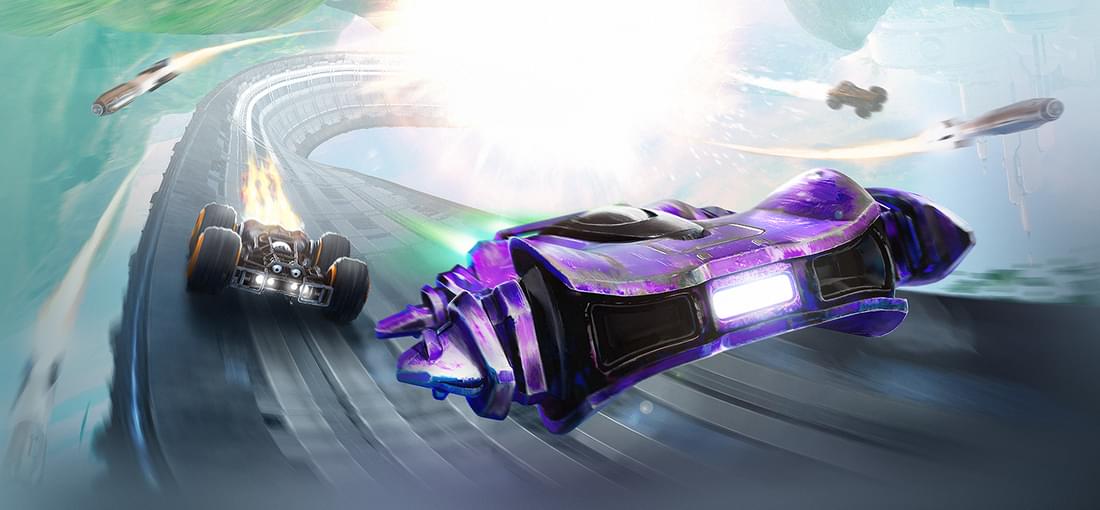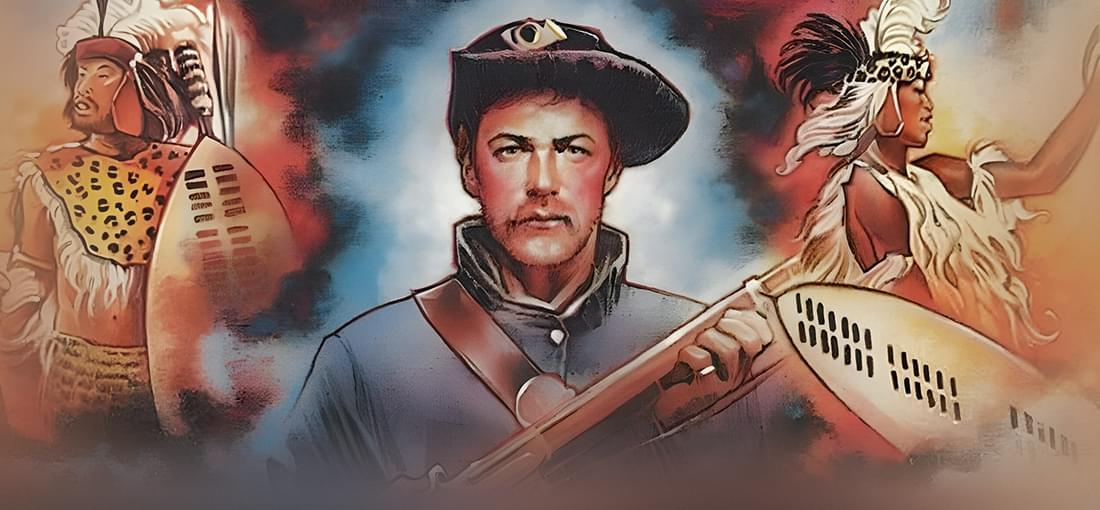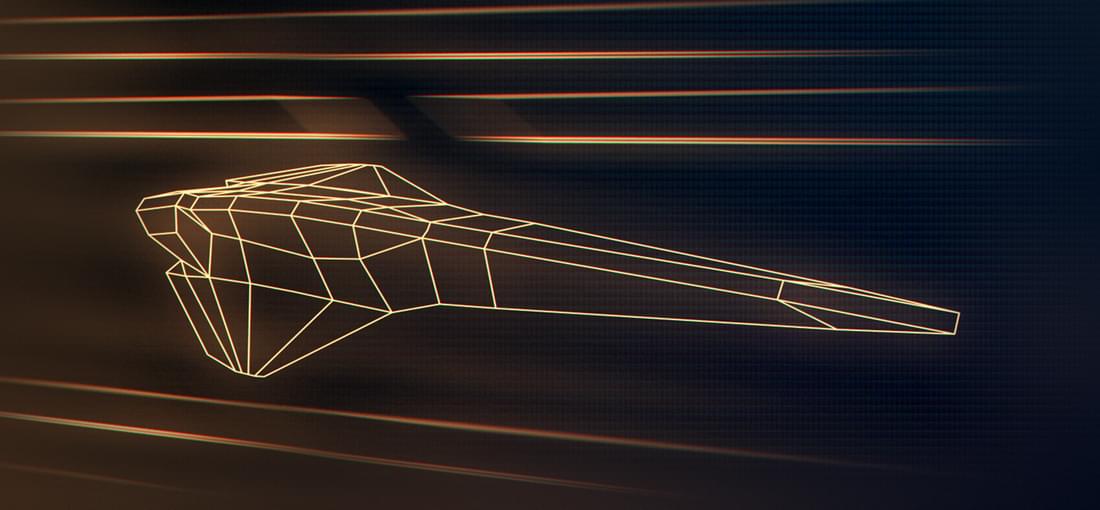


GRIP is one of those games that had the potential to be great, but has so many minor annoyances bogging it down that it ends up being only "good". Most of the issues I have with this game are just small nitpicks, but when you add so many, the end result suffers. For starters, it seems to me most developer resources and testing have been poured into the in-game experience, and other elements such as game menus are rough around the edges in many ways. For example, the requisites to complete an event disappear from the menu once you have beaten it, so if you want to beat it again a month later you don't know your target goals. There isn't a registry of your event results either: there is no way to know if you beat an event by placing 1st or 2nd. Not a deal breaker, but every other arcade precision racer gets campaign progression and campaign menus better. Some other elements are outright broken. For example, finishing an Elimination race during a campaign event fails to spawn a results board. Worst breakage I have found so far comes from the aftergame: after beating the final event of the final tier, initiating a Call-out for a rival has a chance to trigger a number of bugs, including hanging the game if you lose, or hanging the game if you destroy the opponent with your weapons. I suspect the rivalry system is also botched. Sometimes I would Call-Out a duel against an opponent and end up facing a different opponent. So, what do you get once you get past all the issues? Tons of gameplay, of course. GRIP has a step learning curve and it takes a whole lot of time to be able to make sense of all the chaos that unfolds on the screen, but once you master the controls, it is very satisfactory. It can be extremely upsetting before that point, because lots of times the game seems very random. You might get hit and pushed out of the track, lose, and get angry because you feel there was no way you could have avoided it. While I agree that sometimes your victory will be stolen unfairly, most often than not a good pilot can recover quickly from setbacks... once you are capable of recovering from hits quickly you will find the game much more enjoyable. The game gives a good sense of speed and it belongs to the school of thought that claims that, if you feel you are in control, you are not driving fast enough. Weapons and powerups are satisfying to use and feel meaningful. The game is unforgiving and minor mistakes will send you flying out of the track, but that is part of the appeal. The cycle of failing, retrying and succeeding is addictive and never gets old. Beating most tracks requires precision and dedication. Music is serviceable and fits the game, but I don't think it is the sort of music you'd listen while doing anything else. Graphics are fine on PC, sounds work well and are immersive enough. Not bad for a game under 10 Gb. Overall, I think if you like futuristic racers such as WipeOut, BallisticNG or Redout, you will get a lot of enjoyment out of GRIP, even if the quality of this game does not equate that of the offerings from Neognosis and 34BigThings. As long as you keep your expectations in check, you will have fun. And, most important, don't take defeat too seriously.

Oaken is a turn based roguelite which reminds me of cooperative boardgames. I certainly felt like I was playing Legends of Andor at some points. The goal of the game is to descend to the Oak Core and find out why the Song, the magic that gives spirits form and purpose, has faded away. In order to accomplish this, you need to gather resources enough in your way down so you can overcome the last obstacles in your way. I didn't find it particularly challenging to reach the end of each chapter in low to medium difficulties, but overcoming each chapter's boss will put your build to the test. Did you manage to combine the resources you found along the way to build a heroic squad tough enough? If not, your trip ends here. Oaken is one of those games that pander to munchkins who love to create overpowered combinations of skills and abilities. You won't be able to take every item you run into, so you need to pick which powerups to take and which ones to leave. The plot is paper-thin and the world-building and character development could have been much better. It is a pity because you can tell an opportunity was wasted here. The game has so much atmosphere for so little background. There are two playable characters, and you may pick among a number of guides. Each guide comes with a set of goodies and skills that change how the game is played. This makes it so even if you play many runs one after the other, you can keep the game fresh by trying different combinations. Each new hero-guide pair makes you re-learn the game and reconsider your new strategies. The main downside is that in the end of the day you are just playing the main quest once and again and again, even if there is variety to make it look like you aren't. Music ranges from serviceable to good. Graphics are fine for what they are, but it is sometimes hard to differentiate units on the board. The UI feels to busy too. Overall, a solid pick with no deal breaking flaws.

This game is a product of its era and it shows its limitations as a result. The ruleset the wargame engine is built on is quite solid, and all mechanics you might expect from the genre are to be found here. You have morale, you have ammo supply lines, and unit commanders have a limited range so units too far away from their leaders become isolated. There is a lot of subtle minutia regarding rules about formations, skirmishers and the advantages of certain weapons against others. For example, muzzle-loaders are harder to reload and fire back from a prone position, so a unit trying to do so is at a disadvantage against soldiers armed with modern rifles. Most of the complexity runs underground, concealed by the engine, but I certainly recommend reading the manual if you want to make the most out of the game. Still, the basics are very easy to learn and a new player will pick it up in no time. Complex mechanics can be disabled or enabled at will anyway. The main issue this game suffers is that the AI is not that great. I find it quite ok at defending, but it has issues when playing the role of an attacker. I have seen the AI prioritize its movements quite badly, preferring to chase routed units which were not a threat anyway instead of securing strategic objectives which were needed to win the scenario. AI difficulty can be adjusted, but it does not modify the quality of its brain: it just provides a statistical handicap for things such as morale checks. As a curiosity, the game has an email mode which allows you to play with Internet opponents via email. I doubt anybody is using it in this day and age, but I find it noteworthy. Most of the music is above average and scenarios are well designed for the most part. There used to be a sizeable modding community for this game. Fan-made scenarios and mods can be still found if looked for.
Forewarning: I have only played Incoming, not Incoming forces. I remember thinking the graphics were awesome when I first played this game as a kid. Obviously, they are outdated by today's standards, but they are also still serviceable. The game is composed of a series of missions and each mission is composed of a series of phases. In each phase, you control a vehicle -be it a tank, fighter, helicopter, you name it- and must accomplish a critical task for the ongoing war against aliens. Each task is mostly there to spice things up a bit, because at its core each phase consists in the game throwing hordes and hordes and hordes of aliens at you while you mow them down with your futuristic weaponry. Incoming was made in an era in which you were expected to play the games with either a keyboard or a joystick. Still, I found this game to be quite playable with a gamepad, and I found it quite alright for couch gaming. Gamepad support is partial only, and you will need the keyboard for non gameplay related tasks such as saving or loading the game. The main downside of this game is that it is not very replayable. The campaign can be beaten in an afternoon if you put your mind into it, and afterwards there is not much else to do with the game. Playing arcade mode only carries the game forward for so long. Some people also complains that the game is a bit repetitive because 99.5 of it is just killing stuff, but in my opinion that is like purchasing a flight simulator and complaining most of it is about flying. That said, once you factor how cheap this game is, it is great bang for the buck. At less than 3 USD, I found this repackaging of the game to be a great purchase. It was just what I needed to spice up a weekend party with gaming nerds.

You can tell a lot of love was poured into the making of BallisticNG. It feels like a product created by Wipeout fans for Wipeout fans. This is not a shameless rip-off, though. Despite many of the elements being recognizable by old-school fans, BallisticNG ultimately has its own sense of identity. The base game comes with a number of campaigns for single player gaming. Campaigns are just series of events -races, time trials, you name it- which award you a medal according to your results (ie. gold, silver, or bronze). New events within the campaign and new campaigns are unlocked by winning medals in available events. The requisites for unlocking content are pretty lenient, which means you can open new paths without having to achieve gold at everything. That said, this is were this game's claim to mercy end. BallisticNG has a reputation for being a hard nut to crack. Developers tried to make the game accessible, having campaigns introduce new game mechanics one at a time, but progressing past a certain point still requires practice, at least if you aim for gold medals. Beating tracks requires becoming intimately familiar with them and with the ship you pilot. This is specially so if you switch to "expert" difficulty, which is required to obtain platinum medals. The joke goes that the two difficulties supported should be called "hard" and "perfect flight required". If you are up for a challenge, this is your ticket; if you are more casual, you can still progress through with bronze and silver medals. There is a diverse array of ships to fly, and each ship feels quite distinct. There are also many game modes to spice things up, and the AI works well on them all. "Hardcore" level AI will prove a challenge to beat on all modes. As opposed to early anti-gravity racers, you rarely feel in control because AI opponents keep applying pressure on you. BallisticNG makes subtle use of rubberbanding, but if that is not your thing it may be disabled entirely.